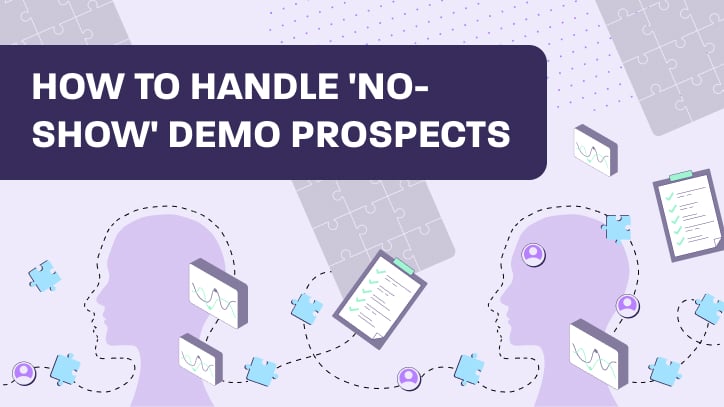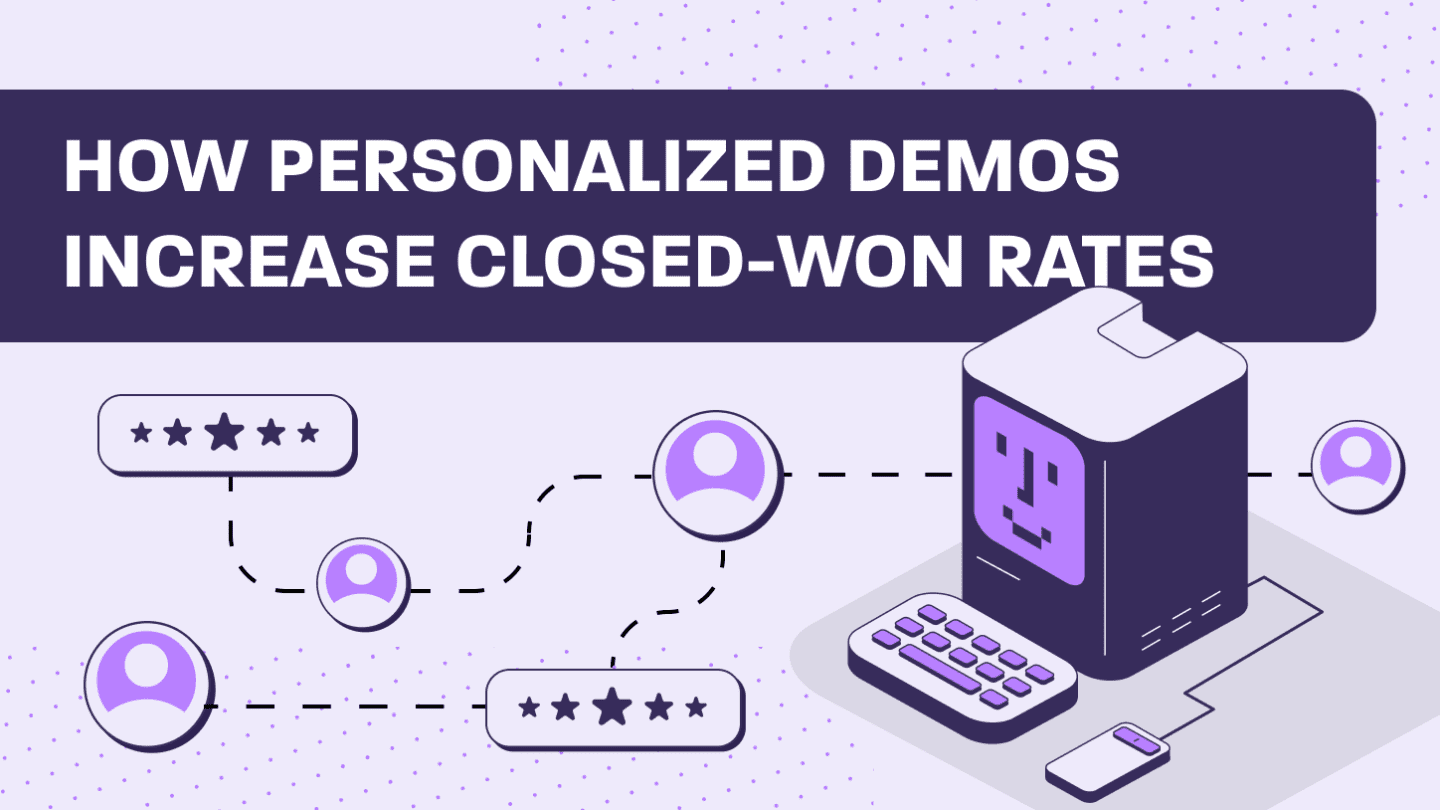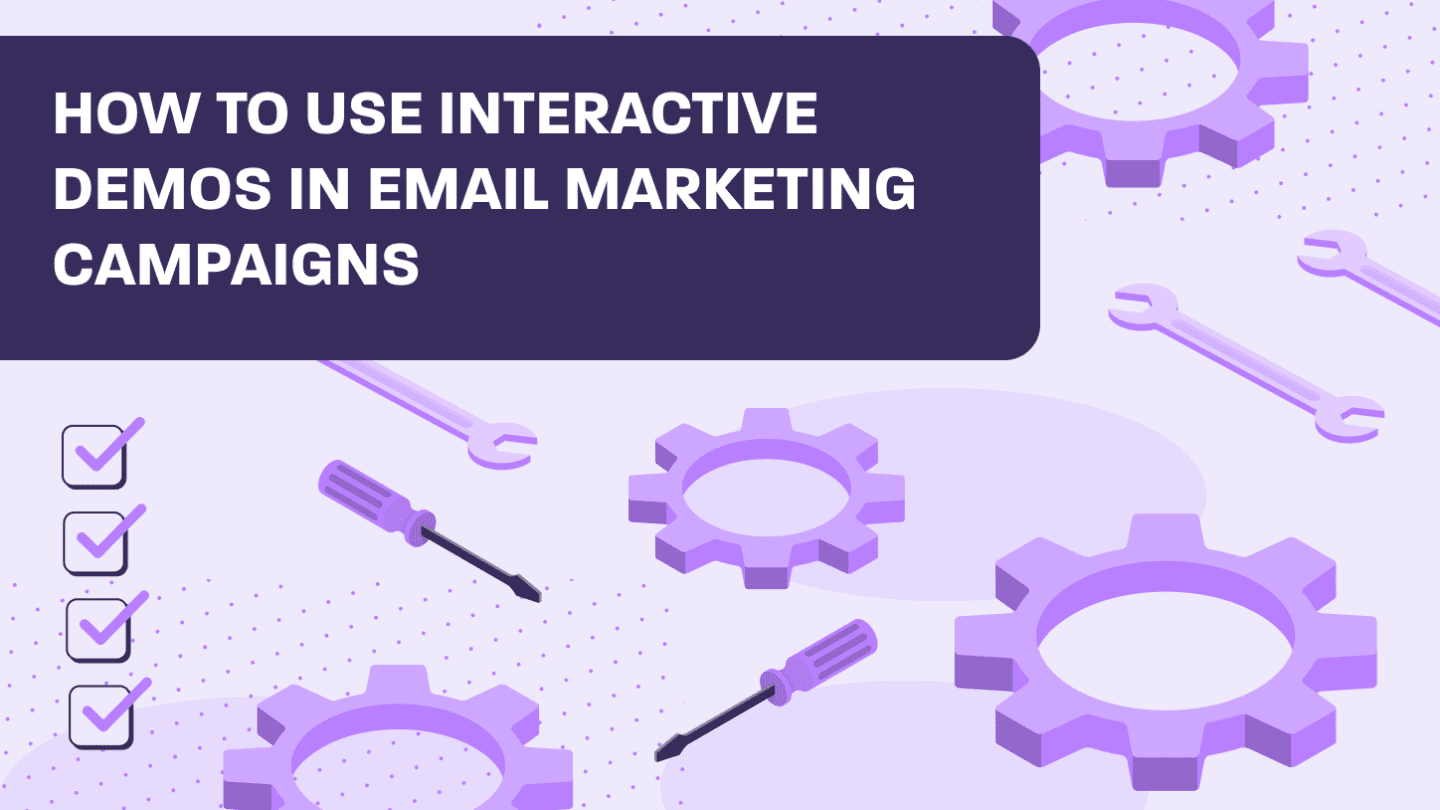You’ve done everything right.
You nailed the discovery call, sent a perfectly crafted calendar invite, and even sent a confirmation email the day before. But when demo time rolls around, your prospect is nowhere to be found.
Sound familiar?
Demo no-shows are one of the most frustrating parts of B2B sales. Not only do they waste your time, but they also represent lost revenue opportunities and can throw off your entire pipeline forecast.
The good news? No-shows don’t have to mean game over. With the right re-engagement strategy, you can win back a significant portion of these prospects and get your deal back on track.
In this guide, we’ll show you exactly how to handle demo no-shows, including proven email templates, timing strategies, and modern solutions that eliminate no-shows altogether.
The Hidden Cost of Demo No-Shows
Before we dive into solutions, let’s talk about why this matters so much.
According to recent sales data, the average demo no-show rate sits between 20-40% depending on your industry and deal size. For some teams, it’s even higher.
Let’s do some quick math: If your sales team books 100 demos per month and 30% don’t show up, that’s 30 wasted hours of prep time and selling time. If your average deal size is $50,000 and your demo-to-close rate is 25%, those no-shows could represent over $375,000 in lost potential revenue each month.
But here’s the thing: not all no-shows are created equal. Some prospects fully intended to join but got caught up in something urgent. Others may have had cold feet or second thoughts. Understanding the “why” behind the no-show will help you craft a more effective recovery strategy.
Why Prospects Don’t Show Up to Demos
Before you can re-engage effectively, you need to understand what causes no-shows in the first place:
Legitimate conflicts: Sometimes life just happens. An urgent customer issue, a last-minute meeting with their CEO, or a personal emergency can derail even the most interested prospect.
Low commitment level: If the demo was too easy to book (think: one-click scheduling with no qualification), the prospect may not have been truly invested in the first place.
Cold feet or buyer’s remorse: After booking, the prospect may have questioned whether they really need your solution or worried about the commitment level required.
Timing issues: The demo was scheduled too far in advance, and by the time it rolled around, their priorities had shifted.
Poor preparation or context: If prospects don’t understand what they’re getting into or why the demo is valuable to them specifically, they’re more likely to skip it.
Competitive evaluation fatigue: If they’re looking at five different solutions and booking demos with all of them, demo fatigue is real.
Understanding these reasons helps you tailor your no-show recovery emails appropriately.
The Anatomy of an Effective No-Show Recovery Strategy
Here’s the framework that top-performing sales teams use to recover no-show prospects:
Immediate acknowledgment: Reach out within 30 minutes of the missed demo. Speed matters here because the prospect is likely still at their desk (or at least near their phone).
Assume positive intent: Your tone should be understanding and helpful, not passive-aggressive or guilt-tripping. Remember, you’re trying to re-engage, not scold.
Lower the barrier to re-engagement: Make it ridiculously easy for them to take the next step. Remove friction wherever possible.
Provide immediate value: Don’t just ask for another meeting. Give them something useful right away, whether that’s a resource, a quick insight, or an alternative way to see your product.
Multi-touch approach: One email won’t cut it. Plan for a sequence that touches the prospect multiple times across different channels.
When to Send Your No-Show Follow-Up Emails
Timing is everything with no-show recovery. Here’s the cadence we recommend:
0-30 minutes after: First touch – Immediate, light check-in 4-6 hours later: Second touch – Offer alternatives and value 24 hours later: Third touch – Share a resource or customer story 3 days later: Fourth touch – Last attempt with a different angle 7 days later: Fifth touch – Break-up email or move to nurture
The key is to strike while the iron is warm but not overwhelm them with too many touchpoints in a short window.
No-Show Recovery Email Templates That Work
Let’s get to the good stuff. Here are battle-tested templates you can adapt for your own use.
Template #1: The Immediate Check-In (0-30 Minutes After)
Subject line: Missed you on our call – everything ok?
Hey {First Name},
I just realized we didn’t connect for our {time} demo today. No worries at all – I know things come up!
I’m around for the next {X minutes/hour} if you can still hop on. Here’s the same link: {meeting link}
If now doesn’t work, just let me know and I’ll send over a few times that work better.
Talk soon, {Your Name}
Why this works: It’s immediate, assumes positive intent, and makes it easy for them to jump on right away if they simply forgot.
Template #2: The Value-First Approach (4-6 Hours Later)
Subject line: Here’s what we would have covered today
Hey {First Name},
I’m guessing you got pulled into something urgent earlier – no problem at all.
I wanted to make sure you didn’t miss out on what we were going to cover today, so I put together a quick overview:
- How {specific pain point they mentioned} impacts teams like yours
- The three-step framework we use to solve {their challenge}
- Why {relevant customer} was able to {specific outcome} in just {timeframe}
I’d still love to show you this live and answer your specific questions. What does your calendar look like for {specific day}?
In the meantime, here’s a {relevant resource/case study} that might be helpful: {link}
Best, {Your Name}
Why this works: You’re providing value regardless of whether they reschedule, which builds goodwill and keeps you top of mind.
Template #3: The Alternative Path (24 Hours Later)
Subject line: Not sure if live demos are your thing…
Hey {First Name},
I know scheduling can be tough with everything on your plate.
Here’s an idea: instead of another live demo, what if I send you an interactive version of our product that you can explore on your own time? It’s fully customized based on our earlier conversation about {pain point/goal}.
You can click around, see exactly how it works for your use case, and even share it with your team – all without sitting through another Zoom call.
Would that be more helpful?
Let me know and I’ll get it over to you today.
{Your Name}
Why this works: You’re acknowledging that their time is valuable and offering a low-commitment alternative. (This is where interactive demos shine.)
Template #4: The Social Proof Play (3 Days Later)
Subject line: How {Similar Company} solved {their pain point}
Hey {First Name},
I wanted to share something I thought you’d find interesting.
{Similar company name} was dealing with {similar challenge to prospect’s}, and we helped them {specific outcome with numbers}. Their {title} said it was the best investment they made this quarter.
I put together a quick breakdown of their approach: {link to case study or short video}
If you’re still interested in seeing how this might work for {their company}, I’m happy to walk you through it. But even if not, I think you’ll find their story valuable.
Worth 15 minutes this week?
{Your Name}
Why this works: Social proof is powerful, especially when it’s relevant to their specific situation. You’re also giving them an out while keeping the door open.
Template #5: The Break-Up Email (7 Days Later)
Subject line: Should I close your file?
Hey {First Name},
I’ve reached out a few times about rescheduling our demo, but I haven’t heard back. I’m guessing one of three things happened:
- Your priorities shifted (totally normal)
- You went with another solution
- My emails are going to spam (in which case, sorry about that!)
I’m going to assume this isn’t a priority right now and close out your file. But if I’m wrong and you’d still like to see how we can help with {pain point}, just reply to this email and we’ll get you sorted.
Either way, best of luck with {their goal/initiative}!
{Your Name}
P.S. – If timing is just off right now, let me know when makes sense to reconnect. I’m happy to follow up in {month} when things settle down.
Why this works: The pattern interrupt gets attention. Many prospects will respond to this email even if they ignored your previous ones, either to reschedule or to give you clarity on where they stand.
Beyond Email: Multi-Channel No-Show Recovery
Email shouldn’t be your only tool for recovering no-shows. Here’s how to incorporate other channels:
LinkedIn: Send a short, casual message: “Hey {Name}, just wanted to make sure you got my email about rescheduling. I know your inbox is probably chaos. Let me know if there’s a better time to connect!”
Phone call: Yes, actually pick up the phone. A quick voicemail 24-48 hours after the no-show can be surprisingly effective: “Hi {Name}, it’s {You} from {Company}. Wanted to check in since we didn’t connect yesterday. Give me a call back when you get a chance – {number}.”
Text message (if you have their number): Use this sparingly and only if you’ve established that kind of relationship: “Hey {Name}, missed you on our call. Still interested in chatting about {pain point}? Let me know!”
Retargeting ads: Add no-show prospects to a retargeting campaign showing customer success stories or product benefits. Stay top of mind while they decide.
The key is to vary your approach while maintaining a consistent, helpful message.
How to Reduce No-Shows in the First Place
Of course, the best no-show recovery strategy is preventing them from happening at all. Here’s how:
Qualify harder upfront: Make sure prospects are genuinely interested before booking the demo. Ask qualifying questions and set clear expectations about what the demo will cover.
Send multiple reminders: Use email reminders at 1 week, 1 day, and 1 hour before the demo. Calendar invitations should automatically include these, but don’t rely solely on that.
Create curiosity in your confirmation: Your confirmation email should excite prospects about the demo. Mention something specific you’ll show them based on your discovery conversation.
Keep scheduling windows tight: Don’t let prospects book demos 3-4 weeks out. The sweet spot is usually 3-7 days from booking to demo.
Personalize the invitation: Reference specific pain points or goals they mentioned. Generic calendar invites feel less important.
Get buy-in from multiple stakeholders: If possible, have other decision-makers add the demo to their calendars too. Social accountability reduces no-shows.
Add a prep call or questionnaire: For high-value deals, schedule a short 10-minute prep call or send a questionnaire before the demo. The more invested they are upfront, the less likely they’ll no-show.
The Modern Solution: Self-Service Interactive Demos
Here’s where things get interesting.
What if you could eliminate the scheduling headache altogether?
Modern demo platforms now allow you to create fully interactive, personalized product demos that prospects can access on their own time. No scheduling, no Zoom fatigue, no no-shows.
With interactive demos, you can:
- Send prospects a clickable demo they can explore immediately
- Personalize the demo based on their industry, use case, or role
- Track exactly what they’re interested in (which features they clicked on, how long they spent)
- Allow them to share the demo with other stakeholders
- Follow up with insights about their engagement
Think about it: instead of trying to recover from a no-show, you could send an interactive demo in your very first email and let prospects qualify themselves. Those who engage deeply are your warmest leads. Those who don’t engage save you from wasting time on unqualified prospects.
This doesn’t replace live demos entirely – complex enterprise deals still need that human touch. But it dramatically reduces early-stage no-shows and helps you focus your live demo time on prospects who are genuinely engaged.
See our demo for example:
Measuring Your No-Show Recovery Success
To improve your no-show strategy, you need to track the right metrics:
No-show rate: Track this by lead source, rep, and booking window. Are no-shows higher for demos scheduled far in advance? From certain sources?
Recovery rate: What percentage of no-shows eventually reschedule and complete a demo? Track this by template and channel.
Recovery-to-close rate: Do recovered no-shows close at the same rate as regular demos, or is it lower? This tells you if they’re worth the effort.
Time to recovery: How quickly do prospects respond to your no-show outreach? This helps you optimize your timing.
Channel effectiveness: Which recovery channel (email, phone, LinkedIn) gets the best response rate?
Most CRMs can track these metrics with custom fields and reports. Set up a dashboard so you can spot trends and adjust your approach.
Handling Repeat No-Shows
What about prospects who reschedule and then no-show again?
This is a judgment call, but here’s our recommendation:
After the second no-show: Send one final email making it clear that you’re putting their file on hold. Be direct but professional: “I completely understand that timing might not be right. I’m going to pause my outreach for now, but please reach out when you’re ready to move forward.”
Don’t chase indefinitely: After two no-shows, the prospect is telling you something – either they’re not that interested or they’re not organized enough to be a good customer. Either way, your time is better spent elsewhere.
Move them to nurture: Instead of deleting them from your pipeline entirely, add them to a long-term nurture campaign. Send valuable content monthly and check in again in 3-6 months.
Remember: Your time is valuable too. Not every prospect deserves unlimited follow-up.
Key Takeaways for Handling Demo No-Shows
No-shows are frustrating, but they don’t have to derail your deals. Here’s what to remember:
Reach out immediately after a no-show with an understanding, non-judgmental tone. Speed matters because you want to catch them while the missed meeting is still top of mind.
Use a multi-touch approach that provides value at every step, not just repeated asks to reschedule. Give them resources, insights, and alternatives that make re-engagement easy.
Consider modern solutions like interactive demos that eliminate scheduling friction altogether. The best no-show strategy might be avoiding the need for scheduling in the first place.
Track your metrics so you know what’s working and where to improve. Measure your no-show rate, recovery rate, and eventual close rate from recovered prospects.
Know when to walk away. After two no-shows, move prospects to nurture and focus your energy on more engaged opportunities.
FAQs About Demo No-Shows
What’s a typical demo no-show rate?
The average demo no-show rate ranges from 20-40% depending on your industry, average deal size, and how you qualify prospects. Enterprise deals with longer sales cycles tend to have lower no-show rates, while high-velocity SMB sales often see higher rates.
How many times should I follow up after a no-show?
We recommend a 5-touch sequence over 7 days: immediate check-in (0-30 min), value email (4-6 hours), alternative option (24 hours), social proof (3 days), and break-up email (7 days). After two no-shows, move them to long-term nurture.
Should I charge for demos to reduce no-shows?
This is controversial, but some high-end SaaS companies have experimented with small booking fees (typically $25-100) that are credited toward purchase. It does reduce no-shows, but it also reduces booking volume. We’d recommend trying other tactics first.
What’s the best time to schedule demos to minimize no-shows?
Tuesday through Thursday, between 10am-3pm in the prospect’s time zone tends to have the lowest no-show rates. Avoid Monday mornings (everyone’s catching up), Friday afternoons (mentally checked out), and anything before 9am or after 4pm.
Can I prevent no-shows with better qualification?
Absolutely. The more effort a prospect puts in before the demo (filling out a detailed form, having a discovery call, completing a questionnaire), the less likely they are to no-show. Higher qualification = higher commitment.
Ready to reduce your no-show rate and make every demo count? Discover how interactive demos can help you engage prospects on their terms – no scheduling required.





